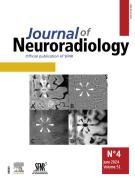Reorganizing brain structure through olfactory training in post-traumatic smell impairment: An MRI study - 18/06/22

Graphical abstract |
Highlights |
• | An increase in cortical thickness and GM density in olfactory and other brain areas was detected using SBM and VBM methods. |
• | VBM method detects the thickening of the right superior and middle frontal gyrus, and bilateral cerebellums by COT method. |
• | SBM method shows the right-sided thickening of the orbital frontal cortex and insular cortex through MOT method. |
Abstract |
Purpose and background |
Post-traumatic olfactory dysfunction (PTOD), mostly caused by head injury, is thought to be associated with changes in the structure and function of the brain olfactory processing areas. Training and repeated exposure to odorants lead to enhanced olfactory capability. This study investigated the effects of a 16-weeks olfactory training (OT) on olfactory function and brain structure.
Methods |
Twenty-five patients with PTOD were randomly divided in three groups: (1) 9 control patients who did not receive any training, (2) 9 patients underwent classical OT by 4 fixed odors, and (3) 7 patients underwent modified OT coming across 4 sets of 4 different odors sequentially. Before and after the training period, all patients performed olfactory function tests and structural magnetic resonance imaging (MRI). Sniffin’ Sticks test was used to assess olfactory function. MRI data were analyzed using voxel-based morphometry and surface-based morphometry.
Results |
Both trained groups showed a considerable recovery of olfactory function, especially in odor identification. MRI data analysis revealed that the classical OT leads to increases in cortical thickness/density of several brain regions, including the right superior and middle frontal gyrus, and bilateral cerebellums. In addition, the modified OT yielded a lower extent of cortical measures in the right orbital frontal cortex and right insular. Following modified OT, a positive correlation was observed between the odor identification and the right orbital frontal cortex.
Conclusion |
Both olfactory training methods can improve olfactory function and that the improvement is associated with changes in the structure of olfactory processing areas of the brain.
El texto completo de este artículo está disponible en PDF.Abbreviations : MRI, VBM, SBM, OT, COT, MOT, PTOD
Keywords : MR imaging, Voxel-based morphometry, Surfaced-based morphometry, Olfactory training, Post-traumatic olfactory dysfunction
Esquema
Vol 49 - N° 4
P. 333-342 - juin 2022 Regresar al númeroBienvenido a EM-consulte, la referencia de los profesionales de la salud.
El acceso al texto completo de este artículo requiere una suscripción.
¿Ya suscrito a @@106933@@ revista ?

